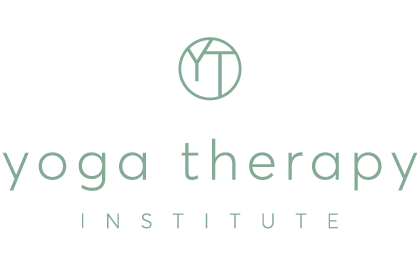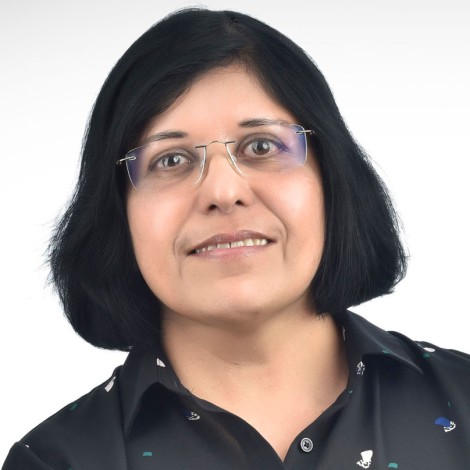This article was published in Vol 2 Issue 35 of The Art of Healing, along with an article by Annette Loudon on Yoga for Breast Cancer. To find out more about this magazine you can visit The Art of Healing Online Store at www.theartofhealing.com.au and go to Back Issues.
In 1992, Shirley Telles was completing her PhD in neurophysiological changes in people who were comatose. This was a rather depressing topic to study, as the prognosis was often not very optimistic. So she decided to change her research direction to look at all states of consciousness, from coma to yoga.
Today, Shirley is both a medical doctor and neurophysiologist specialising in the field of yoga. She’s also the world’s most prominent yoga researcher with over one hundred published articles to her name. She heads the Indian Council of Medical Research for Advanced Research in Yoga and Neurophysiology, and was the Chairperson of the Program Committee of the first International Conference on Yoga for Health and Social Transformation. This conference was attended by 2000 people in India in January 2011 and included speakers such as B.K.S. Iyengar, one of the world’s most famous yogis, along with leading international scientists from Harvard Medical School and Oxford University.
In a recent conversation, Shirley enlightened me about the importance, outcomes and future of yoga research.
Q: Why is yoga research so important?
A: Two reasons. Firstly, yoga was first developed by the ancient rishis (sages) thousands of years ago and many things have changed since then. For example, there have been changes in our physiology and the way our physiology responds to the practices. Secondly, as a medical practitioner, one needs to have verified statistics before one can implement yogic practices with patients.
Q: Can you give us an overview of the yoga research you have conducted?
A: There are four main areas of research. The first is about the physiological effects of yoga practices. Next is how yoga affects motor skills, perception and higher brain function. Third is in therapy – using yoga for different health conditions. And fourth, for rehabilitation, for example, with mentally challenged children.
Q: What is the most significant yoga research that you’ve been involved in?
A: At the moment I am particularly enthusiastic about our recent studies on yoga for obesity. Obviously this is because it’s a problem for the Western world and because the correlation between obesity and various diseases is now very well known. I’m enthusiastic about our finding that a particular chemical, called leptin, which is secreted by the fat cells, actually regulates our levels of satisfaction and wanting to eat and this seems to change in a favourable way following yoga practice. It appears to be a correction right at the level of the brain’s drive to eat or not to eat. In May 2011 we’re planning to go a stage further and have a randomised control trial where we’ll be systematically working out the effect of yoga plus diet, versus diet alone and no intervention.
Q: What other research have you done that relates to the brain?
A: Over the past few years we have been doing studies on which part of the brain is active during certain yoga practices and increasingly we are finding that it is probably the thalamus which is the gateway to reach the higher brain centres. So this is where you can block out a noise or even a pain stimulus. This is the application we’re studying.
Q: What about research into yoga and its effect on older people, as this is becoming increasingly important in the West with our aging populations?
A: We have studied yoga for the promotion of positive health in older people. We looked at older people, who were otherwise healthy, who lived in a community dwelling such as a nursing home. Over a six month period we engaged them in yoga practice and we noticed considerable benefits including: a more positive mental state, a reduction in feelings of depression, better sleep, improvement with their gait and posture, and improvement in certain aspects of memory.
Q: Life is now so technology-based. What did you find when you studied yoga practice among professional computer users?
A: We found benefits of reduced visual strain, reduced musculoskeletal strain and mental strain.
Q: What about studies into yoga and cancer?
A: There is a great deal of research into cancer that shows how yoga reduces the side effects of the radiation and chemo, improves people’s mental state, keeps them optimistic, increases stamina, improves the appetite, and improves pain tolerance. Whether long-term remissions or survival rates are better in yoga practitioners is still unproven. That would really require very long-term follow up studies.
Q: Recently you met with the Dalai Lama. How did you come to be invited to closed talks with him?
A: That was a wonderful experience and I am very indebted to the Mind-Life Institute for involving me in their deliberations. The whole concept began because the Dalai Lama wanted to have a dialogue between neuroscientists on one hand and people in the spiritual tradition on the other. I represented the scientific research in this field.
Q: What was the outcome of these deliberations?
A: First of all we found a lot of common features between all traditions, which was an interesting finding, as everyone feels this intuitively but when you actually discuss it and find it, it’s a good feeling. In the research there were things that were the same and some things that were different which will give us direction for research in our own areas. For example, most of the mindfulness meditation has been done on the Caucasian population in the USA. So it would be an interesting crosscultural comparison to repeat the studies on the Indian population to see what the findings are.
Q: Where do you see yoga research going in the future?
A: Yoga research is going both deeper – trying to explore and understand mechanisms of action, and wider – understanding the use of yoga for ever-increasing applications.
Q:Do you see yoga therapy being more accepted by the mainstream community in the future in the West as compared to India?
A: This is something we all wish for. However realistically it is still rather distant. A lot needs to be done! If you talk to doctors, most of them believe the benefits of yoga but when it comes to their practice, they are worried – especially those in the larger multispecialty hospitals. They are often wary of mentioning yoga to their patients because they don’t know how they’ll respond. So doctors tend to be quite careful. They do say that if they have adequate evidence they will be more inclined to use yoga in their practice. Doctors are unnecessarily cautious. Their patients are quite receptive. Interestingly, in America, I have observed that academics and clinicians of non-Indian origin are more ready to talk about yoga with their patients than those of Indian origin. I think this is because it would look as though you are trying to push your own culture on to others. I was pleasantly surprised about the level of acceptance of yoga in the USA – the research is very well-received there. I think it’s because when they have a specific question about yoga and how it works, there is a specific answer we can give them. In this way, they are usually convinced.
Q: How can the yoga community develop greater mutual understanding with the medical fraternity?
A: The most important way is by substantiating anecdotal reports of the benefits with rigorous research.
Q: Do you have any concluding remarks?
A: Research is important. I have a passion for it and I really like what I do but there is nothing like the actual experience of yoga practice. I believe that the experience part of it far exceeds anything that you can prove in the lab. And with the experience comes the commitment: you get – in a sense – addicted to it.

